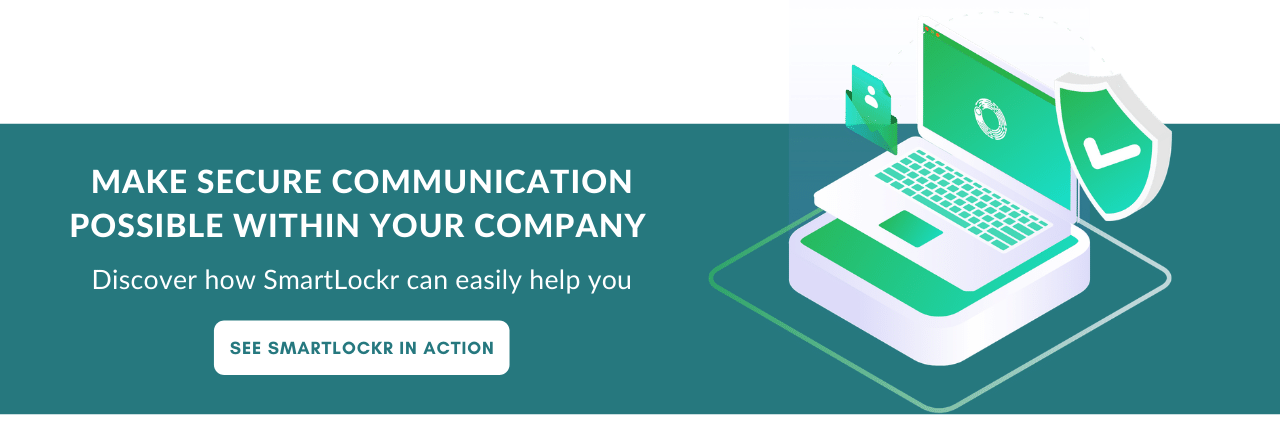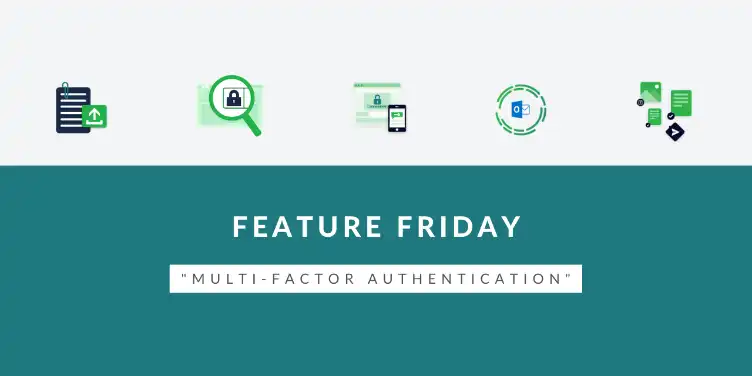Behind the scenes we are working hard on our latest product version, V4. To keep you informed of all developments, from now on we will share a new or updated feature every Friday in our “Feature Friday.” This Friday: Multi-Factor Authentication
What is Multi-Factor Authentication?
So, what does Multi-factor Authentication (MFA) actually mean? In the case of email communication, it means that you are adding an additional layer of email security but asking for two or more pieces of evidence in order to access the email. Using either a user-controlled or one-time password. Two Factor Authentication is a sub-category of MFA where the access to an email or another kind of transaction is granted only based on the combination of two different factors. The MFA naturally has the potential for a higher level of security because it can be more factors that ensure the security of your communication.
The verification methods are:
- A phone call or SMS
- A biometric device
- A randomly generated passcode
- A smart card (virtual or physical)
The email is encrypted until access is granted by the combination of the authentication factors, whether that's two or more.
Why is Multi-Factor Authentication important?
Encrypting your email and making sure your communication is secure from thirds party access with TLS encryption, are two very important factors in making your business communication is secure and GDPR compliant. But sometimes that is not enough.
In addition to the basic security and security per password, there is also a third way of securing: Multi-Factor Authentication. By using multiple sources of identity confirmation, email security becomes better and more secure.
Email communication is no doubt the biggest cause for data breaches. And according to the U.K. Information Commissioner's Office´s Cyber Security Breaches Survey of 2018, the two most common factors contributing to data breaches are human error and staff awareness.
Without any form of two factor- or multi-factor authentication, the risk associated with sending an email with confidential data to the wrong recipient is much higher. Once the email is sent, and you realize you´ve accidentally sent it to the wrong person because of some auto-fill mistake, there is no going back. Unless you sent an attachment only and have the option to block attachments after sending. The contents of the email are readily available, and the data breach has essentially already happened, at this point, the only thing you can do is report the data breach with your national data protection authority. It is absolutely worth considering integrating an email security solution with your current email system.
The benefits of Multi-Factor Authentication
With Smartlockr you will now get multi-factor authentication, and thereby you can have peace of mind with regards to who has access to your email. Without MFA you risk a data breach by sending a confidential email to the wrong recipient because there are no steps of authentication once the email is received. By integrating multi-factor authentication, you can be sure that only your intended recipient has access to the email.
Because of the requirement to enter a given code that was generated or set by you and is only available for your correct recipient. This ensures a very high level of email security, and by an implementation, increases employee awareness across your workforce.
If you would like to be notified when we release a new blog, we kindly ask that you fill in your information below. If you would like to learn more about our product, you can read about our Secure Emailing Solution or perhaps you want to Try Our Product?

